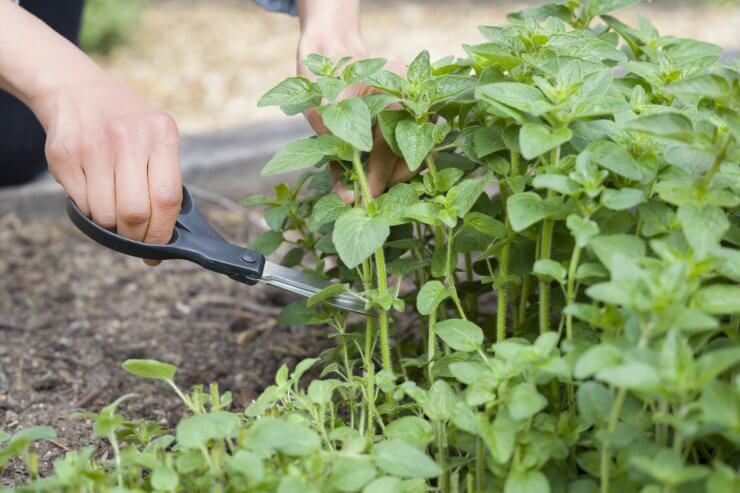
Nothing beats the taste of fresh herbs and you will never change my mind. And this year, my outdoor herb garden is a thing of beauty. ::brushes dust off of shoulder:: But, I live in a climate that experiences cold winters and frozen ground. My darling herbs will not fair well. I know I can harvest and preserve fresh herbs to use all winter, but I want fresh herbs too! If only there was a way to transplant herbs into indoor pots. Then you’d be able to use fresh herbs all year long without spending a fortune at the grocery store for those little dinky packages of “fresh” herbs.
Well, I hope you’re sitting down because I have major news for you. Miracle of miracles, yes, it’s true! You can transplant herbs indoors after their summer growing season. Protect your precious herbs from harsh winter conditions, and create the indoor herb garden of your dreams by following these basic guidelines.
Discover 7 top tips for growing, harvesting, and enjoying tomatoes from your home garden—when you access the FREE guide The Best Way to Grow Tomatoes, right now!
What herbs are best for transplanting indoors?
Nearly all types of herbs can grow indoors. Perennial herbs like oregano and thyme can be divided up nicely into clumps before transplanting. Even annuals like basil, lemongrass, and dill, can be brought indoors. The trick with these herbs is to let them go to seed outdoors in the fall. Wait for the seeds to germinate outside, then transplant the seedlings into pots and bring them indoors.
Woodier herbs like sage and rosemary are trickier to dig up. If you think you’ll want to move them indoors it might be best to plant them in a sturdy container, to begin with. That way you just need to move the pots inside or outside depending on the season.
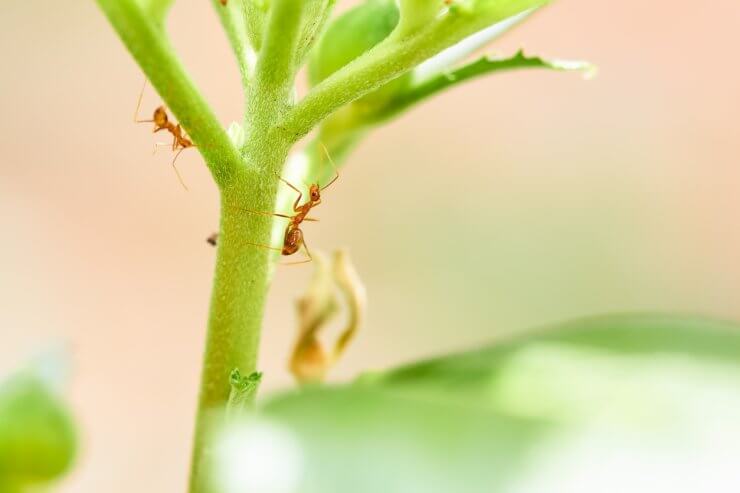
Prepping to transplant herbs indoors
I wish I could highlight, bold, italicize, and set it in neon flashing lights this next bit of advice because it is crucial: Check your plants before bringing them indoors. Remove any bugs or insect eggs from the leaves, stems, and roots. The last thing you want to be dealing with is an indoor infestation. This goes double for soil. Check the soil before transplanting it in a pot. Rinse with water to wash away any bugs looking to hitch a ride indoors.
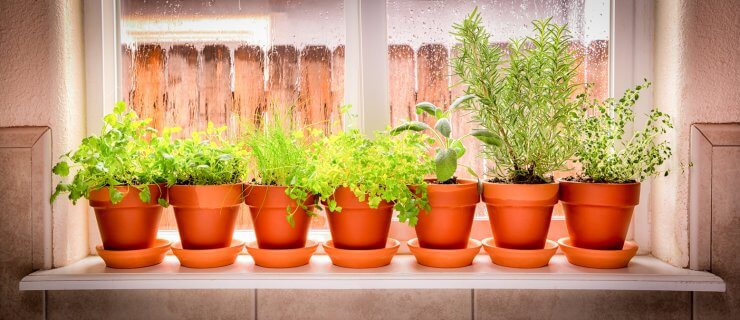
How can I help my herbs adjust to their new indoor home?
Any dramatic shift in the environment can be stressful to plants. You may notice when you transplant herbs indoors that some leaves drop or that the plant grows slower than it did outdoors. Start your transplanted pots off in indirect sunlight, to begin with. Avoid direct sunlight for a few weeks and let your herbs adjust to the shock of moving indoors. Then you can move them into a sunnier spot. If you don’t have a particularly sunny spot indoors, consider using a grow light to help your herbs thrive.
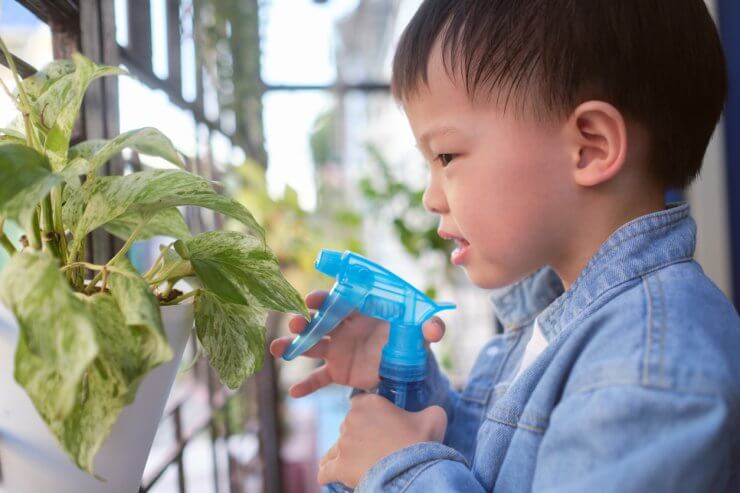
Care and feeding for your newly transplanted herb friends
Give your herbs a quarter turn every week or so, to make sure all sides receive enough sunlight. A general indication that it’s time to water is when the top inch of soil is dry. If your house is particularly dry (especially once the heat starts going), consider misting herb leaves daily to boost humidity.
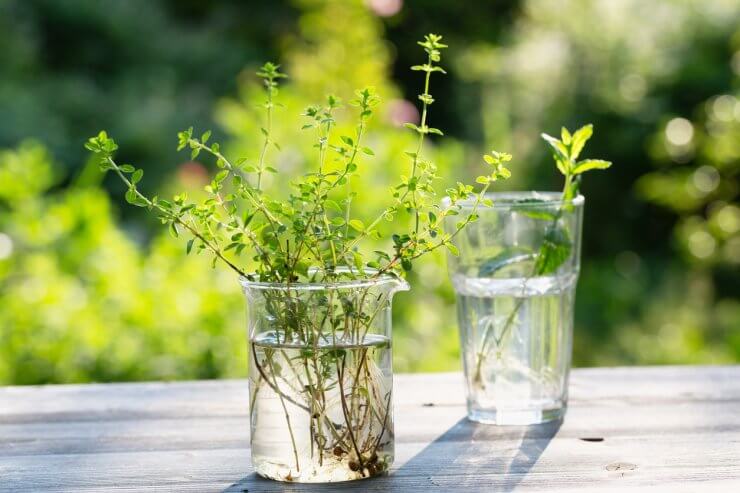
What about cuttings in water? Can I just do that instead?
Taking cuttings of your herbs is a great way to ensure access to fresh herbs all winter long. This works especially well for annuals, whose growing season is shorter. Take cuttings of herbs like basil and mint and place them in a small jar or vase of water. Eventually, roots will begin to form, and once they are long you’ll be able to transplant the cutting into another indoor pot with potting mix. Taking cuttings of your herbs also stimulates new growth on the existing indoor plant and can help lengthen an herb’s growing season.
In terms of choosing cuttings over transplanting altogether, I highly recommend a combination approach. When you transplant herbs from the garden to an indoor pot, you’ll have access to herbs a lot faster than if you were to make cuttings and start new plants.
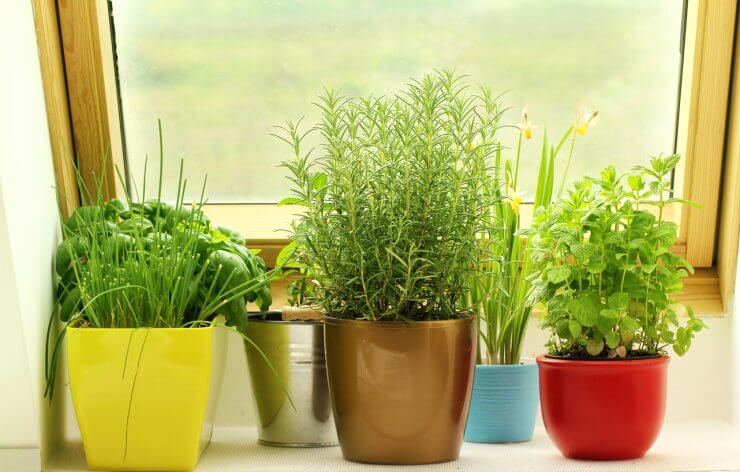
Herb-specific tips
Here are some tips if you want to transplant these specific herbs:
- Basil– The cutting method works great for starting new basil plants. Another cutting method that works well for basil is to take larger cuttings and dip them in root powder before transferring them into an indoor pot.
- Chives – Chives are one of the easiest herbs to transplant from outdoors because they are relatively hardy. It’s best to transplant them in clumps rather than individual chives. As long as the new potting mix is moist, your chives should take off in no time.
- Parsley – Parsley is fairly hardy, but it’s time to bring it indoors when overnight temperatures dip into the mid-30s.
- Lemongrass – It’s time to move lemongrass indoors when the tips of the grass start to turn brown.
- Oregano – Water the oregano the morning before you plan on transplanting it. Transplant in a pot that is deep enough to accommodate the root ball. If the outdoor oregano plant is too large, divide the plant by cutting through the roots using a garden spade.
Do you transplant herbs indoors for the winter? What tips or tricks have you learned along the way? Share them in the comments!
Discover 7 top tips for growing, harvesting, and enjoying tomatoes from your home garden—when you access the FREE guide The Best Way to Grow Tomatoes, right now!





Lemon grrass does fill out easily. Prune it back tate summer, and take cuttings late summer as well. CUtting root easily in water and you can have a smaller bush for indoors. Same for lemon balm.
Lemongrass, Do you know lemongrass is usually as big as 5 feet tall and wide? It is too big to grow in side of a house. I threw away it from my yard because it was taking away space for other plants – not suggesting bringing in a house.